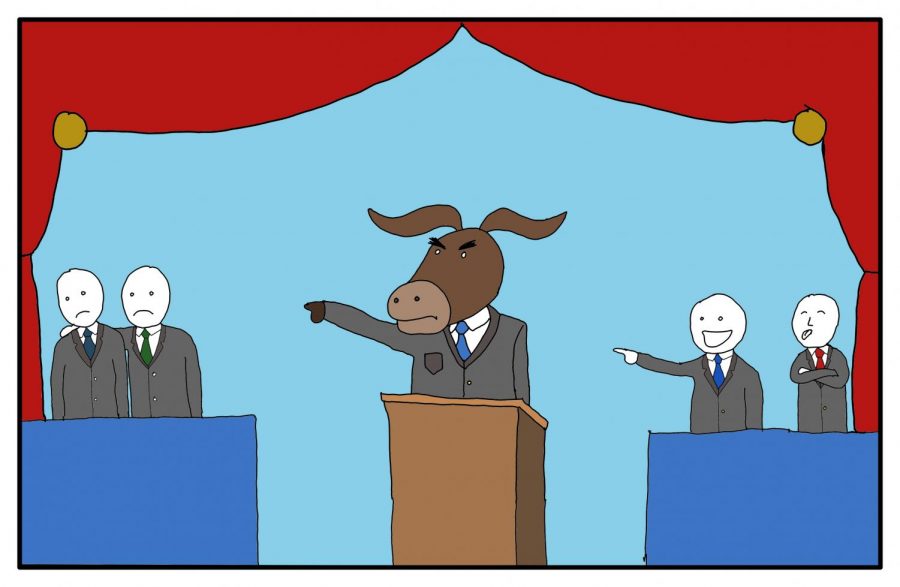Democratic debate field winnowed, but Trump still looms
September 5, 2019
The Aug. 28 deadline to qualify for the upcoming Democratic debate has come and gone, with just 10 out of the 20 remaining candidates making the cut. While we are still months away from the February Iowa caucuses— and over a year away from the November 2020 election— serious cuts have already been made to the Democratic primary candidates, which at its largest extent numbered 26 people.
The cuts provide some much-needed clarity for the Democratic base; presidential primaries have classically been the perfect arena for lesser–known politicians to make their debut on a national stage. But while many of these candidates do consider themselves serious contenders, I feel as though many Democrats like myself want to make it clear that this election is not the time for John Delaney and Marianne Williamson’s publicity tours. The stakes are simply too high.
The massive pool of nominees is indicative of the disordered state of the Democratic party and has given President Trump and congressional Republicans legitimate ammo against the integrity of the fragmented party. Weak party unity is an obvious challenge for the Democrats in 2020, and the spectacle of a ragtag 20-candidate debate pool was a laughably accurate depiction of that insecurity. The size of the candidate pool in the June and July debates forced candidates to opt for shouting pithy one-liners rather than outlining comprehensive policies. Although the Sept. 12 stage will host the same number of candidates as the summer debates, candidates will hopefully turn away from spotlight-stealing tactics and engage in a spirited, yet civilized, debate.
While the cuts are significant, they have not necessarily eliminated the most radical candidates. The current diversity within the Democratic party is actually quite well-represented in this group of candidates, from centrist Democrats to self-proclaimed democratic socialists still in the running for the nomination. Although we can’t fill a small auditorium with the current candidate pool, there is still a candidate for every type of Democrat.
In the end, the real problem facing the Democratic party is not merely which candidate to endorse. Rather, it is the irreconcilable dilemma that, no matter how salient the diversity of thought within the party is, President Trump can still manage to vilify the entire Democratic party in a way that transcends partisan politics.
In our support for one of the ten candidates debating this month, Democrats must carefully consider the outcome of the 2016 election. Crucial swing states like Michigan, Pennsylvania, Ohio and Florida— states that Barack Obama won in 2012— were flipped in 2016 by the Trump campaign. Befuddled as it may be, his campaign managed to win the election through aggressive electioneering in these key regions. The answer to winning this election is the middle-class voters who reside in these states. The power of this voting demographic cannot be ignored as it was in 2016. But are these voters too far gone to be swayed by even the most moderate Democrat? Has increased partisan tribalism led them to the point of no return? Are those voters ever coming back? The current candidate pool is still large enough for loyal Democrats to feel represented, but the question remains whether former Democratic voters will ever feel that way again.























Bob Maul • Sep 8, 2019 at 10:23 pm
A razor-sharp analysis of the Democrats’ plight — and the nation’s.